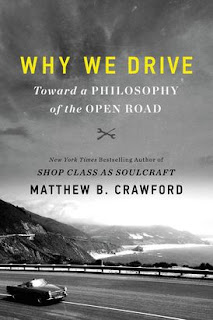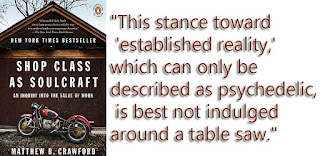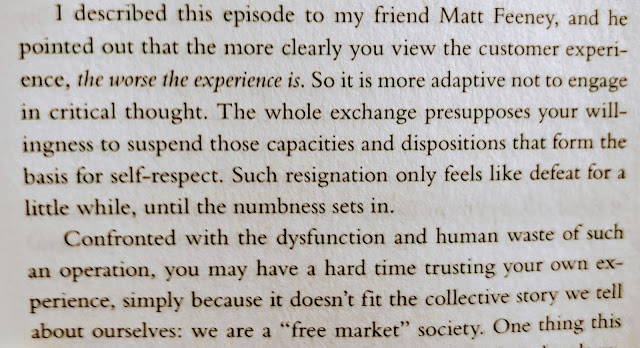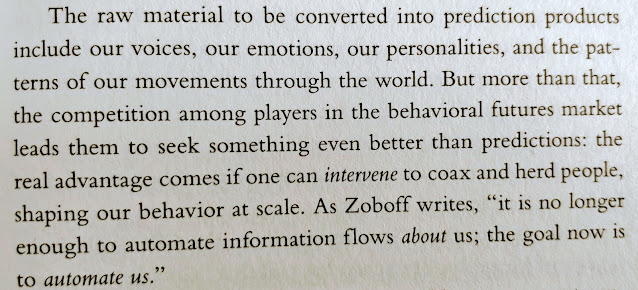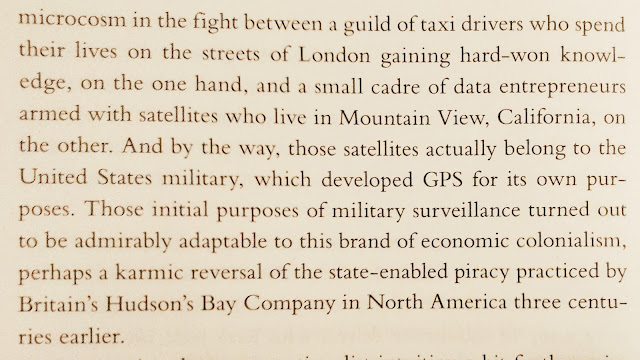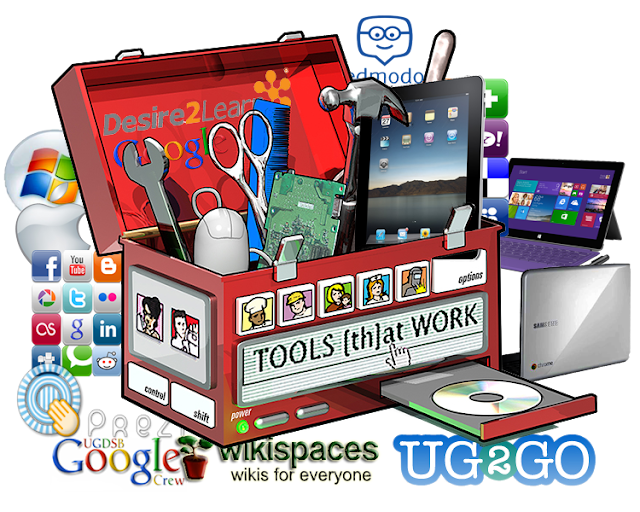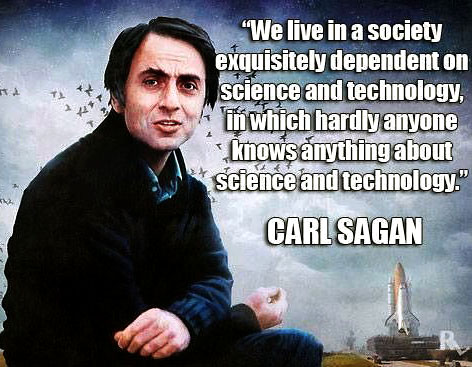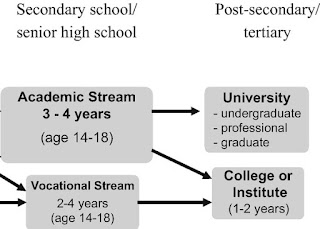The prejudice against manual skill is ongoing in Ontario education. I was chatting with one of our auto-shop teachers the other day and we were both lamenting the abuse of our manual skills in the halls of academia. A teacher who was musing on why students ‘waste their time’ taking tech courses the week before was begging this same auto-shop teacher to change her snow tires a week later, even though she knew he had no students available to do it. He is a qualified automotive technician, but he isn’t paid to be one when he’s at school, he’s paid to teach, but that doesn’t stop people who only operate in the rarified realm of ideas to expect free access to the hard earned, hands-on skills he has taken years to develop. He talked about how he was often at school hours after everyone else had left finishing automotive repair jobs for people who pay for his time and expertise with their earnest thanks and little else. He’s still expected to do the make-work extra duties that the academics have worked out for themselves.
I’m in the same boat in terms of information technology skills. I spent years of my life and my own money becoming qualified as a technician. I can fix pretty much anything, but that’s not what I’m being paid for when I’m at school. I’ve opened up access to in-school IT support because it gives my students an opportunity to develop genuine, experientially driven skills that widen the scope of their learning. Last year, in spite of my making numerous suggestions that would have kept computer science alive in the building (it’s since been cancelled on-site) as well as keeping a senior computer engineering class available in each semester to provide needed in-school IT support, one of my senior sections got cancelled. This hasn’t stopped the expectation that I provide IT support in the school even when I’m being double doubled by an absurd schedule. I’m able to help and the last thing I want to see is a colleague in distress because their tech isn’t working, but asking for that effort to be recognized is a step too far.
Now that I’m out of that cruel always on in two places at once schedule I asked if my hours of extra support work (I was the only teacher in the building still doing their usual extra duties) be acknowledged and was told they wouldn’t – I get to do the same make-work as all the academics, just like our auto-teacher who is here for hours doing work for the school ‘community’ of which we are clearly not equal members. The logic for this is that my extra duty work is equal to another teacher standing in the cafeteria watching teenagers eat lunch (what most teachers do as extra duty). What I’m doing took years of training and numerous professional qualifications, what they’re doing requires a pulse – except they aren’t even doing that because no one is eating lunch in school at the moment, though everyone has doubled down on tech use and the support it requires. Why is this the outcome? Because in the minds of graduate degree educational management manual skills are treated as next to worthless. This is a value theory decision. Ignoring the value of expertise means you can treat it as a free expectation.
This happens to many technology teachers. They get paid less because teacher pay is wrapped around academic/university achievement that the vast majority of the people running the system are products of. My own experience in trying to apply my vocational experience even while already an academic teacher demonstrated this prejudice in startling clarity. The College of Teachers can understand a degree with little effort, but show them a decade of industry qualification and experience and you can expect it to be dismissed out of hand. Tech teachers make less but are expected give away the skills that make them qualified to do what they do in a way that other teachers simply aren’t. We go so far as to invent meaningless make-work extra duties (like cafeteria duty) so the academics can top up their time with minimal effort (and no chance of getting their hands dirty).
A few weeks ago my IT qualifications got dismissed by another administrator who equated years of training, experience and multiple industry certifications with watching a few hours of video and writing a multiple choice test. Academic prejudice is real and everywhere.
I fired a Statistics Canada research piece on Canada’s poor handling of women in STEM and particularly in engineering and computer science to our SHSM, guidance and administration, which prompted a good talk with our local SHSM head. My argument was that academically focused girls are directed out of engineering and technology pathways toward more ‘gender appropropriate’ pathways (that are also usually far less lucrative) by peer pressure. My experience at last year’s CAN-CWiC Conference repeatedly told the story of women who regretted not pursuing technology related pathways in high school and having to expensively pivot later in life. Sexism, under the guise of peer pressure and student choice, play a big part in this, but it also reflects a lack of appreciation for alternative pathways inherent to our academically prejudiced education system.
A teacher who got straight A’s in high school, went straight to university and got straight A’s there too and then went straight into teacher’s college (straight A’s again) before being deposited into yet another classroom for the next twenty-five years of their lives are going to carry academic prejudices with them because they know of no other experience. Any student not on that straight and narrow path of ‘excellence’ is less than.
I frequently see the system make aggressive resource grabs to ensure academic courses run. University bound sciences will run at less than 50% capacity while workplace and applied courses are frequently bundled together or cancelled and non-academic students are just dropped into academic sections because they are all that’s available. An example of academic protectionism are french immersion courses where academic students are protected in classes that are often a fraction of what they should load to because those students are special. Everyone else has less to ensure system resources are focused on the academic streams even though these students are frequently the ones most capable of doing more with less. My own school sports a higher than 50% graduation into the workplace statistic while spending the vast majority of its resources protecting university pathways.
Our SHSM head said a colleague of hers once described the route that students not on the straight and narrow academic route take as the ‘crooked path’. I’ve walked this path, unlike the majority of teachers. I dropped out of grade 13, worked in an apprenticeship as a millwright, attended college then dropped out and then went back into summer school and high school in my early twenties to graduate before going on to attend university. I then worked in the world for over a decade before becoming a classroom teacher – a job I never thought I’d be doing after my own negative experiences as a student in the same system.
That crooked path is seen as less-than by academics. Students who would benefit from my M (college/university – essential doesn’t run because it would mean reducing the number of students they can stuff into my shop) technology program are told not to ‘waste their time’ taking tech when they could take three sciences they don’t need because they are more credible when applying to university. That’s backed up by backwards universities demanding irrelevant but ‘difficult’ courses to access their STEM program, ignoring TE even when it’s a TE program! Academic prejudices learned in universities trickle down.
Tactile skills training has always had trouble fitting into academic education. The extra costs and safety concerns make rows of robots, I mean students, doing ‘academic’ (white collar office) work much cheaper – it’s also cheaper to apply digital technology too as our recent school decision to buy nothing but Chromebooks even as board IT and I suggested differentiating our technology to meet specific needs (again – we’ve bought nothing but Chromebooks for years). Whether you want to look at resource allocation, guidance direction or even just how teacher duties are assigned, the prejudice against hands-on skills is systemic.
from Blogger https://ift.tt/3kRs4Df
via IFTTT





